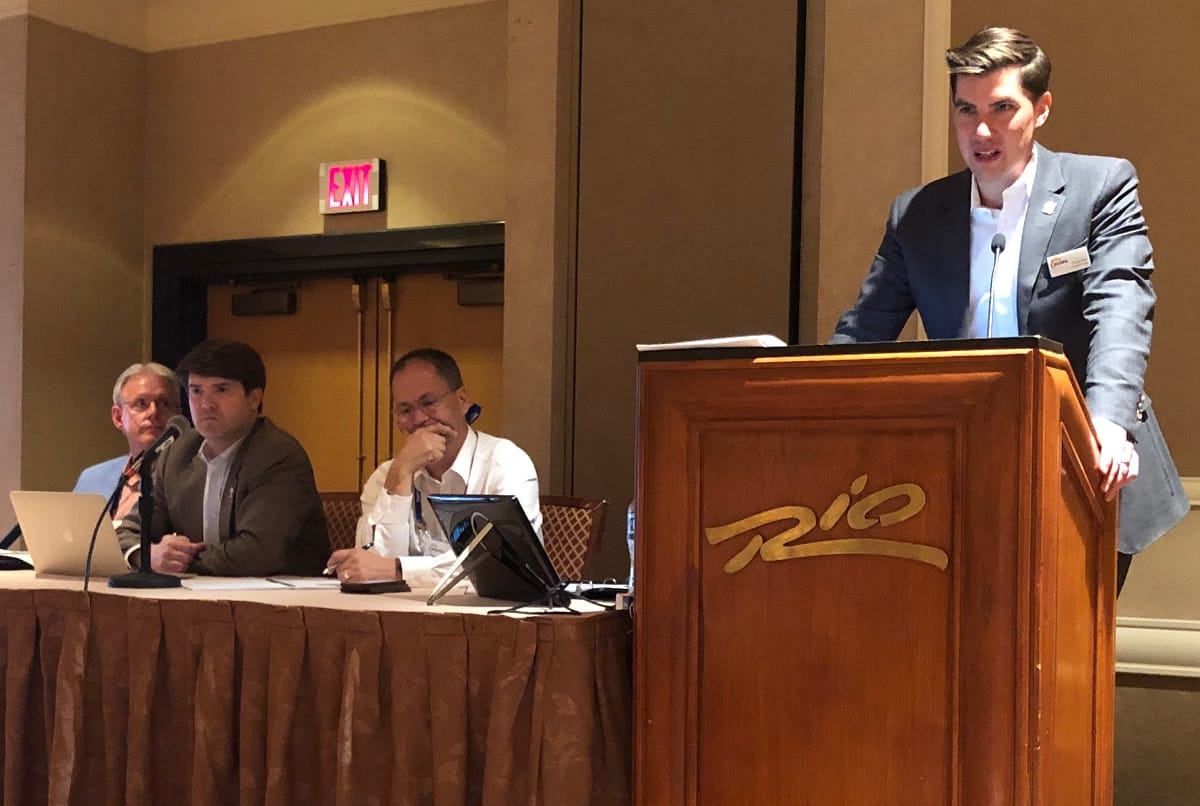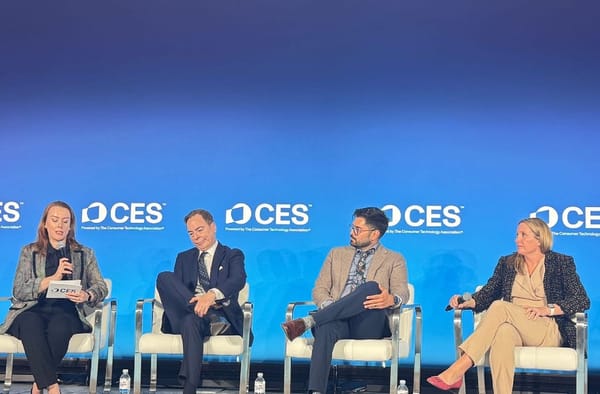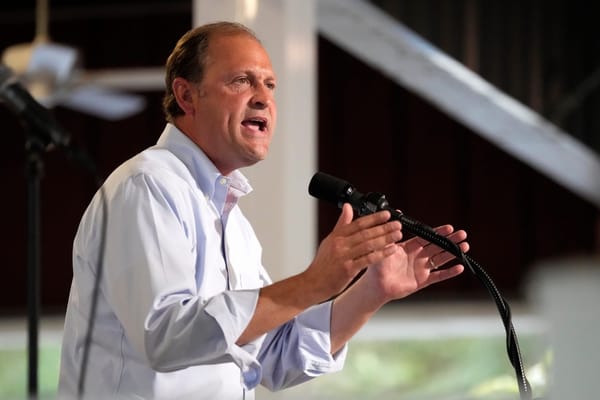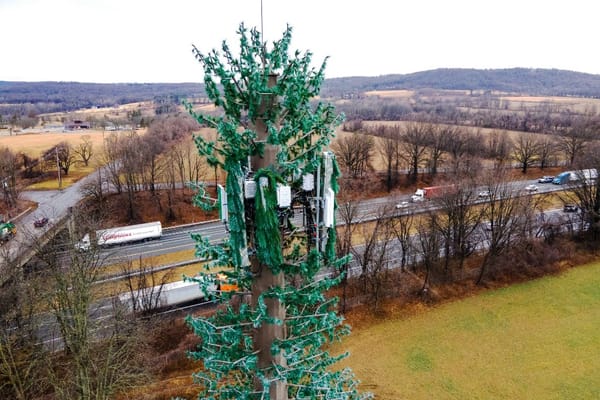Wireless Internet Providers Excited About Multiple Spectrum Sharing Opportunities, Including FCC Priority Access
The Citizens' Broadband Radio Service pioneered a new model for shared spectrum.

LAS VEGAS, Nevada, October 18, 2019 – The Wireless Internet Service Provider Association annual conference opened here this week with optimism, a record turnout of more than 2,200 attendees, and lots of discussion about wireless radio frequencies.
The theme of this WISPAPALOOZA conference, “Spectrum of Possibilities,” plays off the fact that radio frequency spectrum seems to underlie just about every decision that these wireless internet service providers make.
And with two or three or three significant bands of spectrum under active negotiation by and with the Federal Communications Commission, merely keeping track of all the spectrum-related activity of concern to WISPs is no small task. This article aims to present a summary of these major spectrum matters.
As scrappy entrepreneurs that bring wireless broadband to many parts of the country that are ignored by big broadband providers, WISPs have a strong independent streak – and a traditional hesitancy to engage in the sort of Washington lobbying that is par-for-the-course for wireless spectrum.
“It is a great time to be a WISP,” association CEO Claude Aiken said Tuesday at the conference kick-off. “This is our time to shine, to show America our integral role in delivering new possibilities to our local communities.”
Aiken, who stepped into his leadership role at WISPA just over a year ago, noted important progress in how WISPs are treated by the FCC. “Policymakers and the marketplace are awakening to the possibility that through WISPs, bridging the digital divide could be achieved more quickly and cost-effectively than with the traditional players. That the WISP model of broadband deployment is undeniably potent and effective.”
WISPs role as providers of fixed broadband in rural America
Consider all the hype seen in the broadband word about the so-called “fifth generation,” or 5G, technology standard. It’s being promulgated by the “big four” (soon to be big three) wireless carriers: AT&T, Verizon, and a combined T-Mobile/Sprint.
These wireless giants provide “mobile” wireless service, meaning that you can get service with your cellular phone wherever you are. These much-discussed 5G standards generally pertain to newly emerging technologies for transmitting and receiving mobile wireless signals at significantly higher speeds and lower latencies. But the technologies currently available for these mobile services are nowhere near their marketplace hype.
Instead of offering mobile service, WISPs generally provide of “fixed” wireless, meaning that they transmit broadband signals from a tower to an internet device that stays in one location, such as a home broadband connection. Those services generally operate in different frequency bands than those of mobile broadband.
Nearly 2,000 WISPs serve six million Americans with broadband, often in hard-to-reach rural areas that traditional telecom players have chosen to ignore. These WISPs, including about 800 that are members of WISPA, generally employ fewer than 10 individuals, have been in business for about 15 years, and risk their own private capital to bring service to their customers.
Their vital role in bridging the rural digital divide is increasingly being recognized, including with a scheduled keynote appearance by Michelle Christian, the national director for rural affairs for the U.S. Small Business Administration.
WISPA members bullish about future spectrum prospects
Yet in spite of all the bull surrounding 5G, WISPA members are bullish about their future prospects.
Why? Because WISPs, which are frequently confronted with regulatory, capital, and local infrastructure challenges, are often adept at innovating connectivity solutions in the most unforgiving circumstances.
WISPs have traditionally made use of unlicensed spectrum, or spectrum that is available for anyone to use without charge. The most popular unlicensed bands are located at 900 MegaHertz (MHz), 2.4 GigaHertz (GHz), and 5 GHz on the spectrum dial. Because they use no-cost unlicensed spectrum, they are able to beam broadband to far-flung localities at prices that WISPA officials say are 15 percent of the cost to wire regions for fiber service.
But with spectrum being the scarce “fuel” for a WISP’s business, the unlicensed bands aren’t enough to keep up with growing demand. Hence the buzz and discussion at WISPALOOZA here centered on three specific spectrum proceedings in Washington.
The first of these is the Citizens’ Broadband Radio Service, which operates in the 3.5 GHz band, or specifically from 3550 MHz to 3700 MHz.
A second proceeding of key interest to WISPA members is the C-Band, or the segment of spectrum from 3.7 GHz to 4.2 GHz.
Most spectrum is classified as either licensed, meaning that it is effectively privately property, or unlicensed. But over the past decade or so, the FCC has trended toward a new model of spectrum sharing. Under this approach, advances in radiofrequency technology transmission permit a range of uses with the same spectrum.
Unlike the fully unlicensed bands in which most WISPs operate, both CBRS and the C-Band will be shared or “lightly licensed.” Additionally, these so-called “mid-band” services have capacity for higher broadband data transport without requiring the line-of-sight that is required in high-frequency transmissions.
That’s why the mid-band provides new opportunities for WISPs that have been heretofore lacking.
An unusual start to the CBRS, or Citizens Broadband Radio Service
What is now called CBRS is considered the 150 megahertz of spectrum being made available from 3550 MHz to 3700 MHz. The band brings together a weird range of different sorts of wireless uses: Defense Department radar systems, a so-called “Fixed Satellite Service” for space-to-earth radio stations, and now WISPs.
Beginning in 2005, the FCC revised its rules to open up the portion from 3650 MHz to 3700 MHz. Under the licensing scheme adopted at that time, the FCC issued an unlimited number of non-exclusive nationwide licenses for commercial use – provided that the WISP seeking to use the license registered their base station with a spectrum coordinator.
The registration was necessary to enable an FCC-designed spectrum coordinator to manage potential interference with the satellite-to-earth stations. The 8,000 WISPs currently using 3.65 GHz (which means the same thing as 3650 MHz) has provided the experimentation necessary for the FCC to take the next step in CBRS evolution in 2015.
Four years ago, the agency created rules for the shared use of 3550 MHz to 3700 MHz. There will be a three-part structure for the 150 megahertz worth of spectrum: (1) Incumbent users, which are largely Defense Department and satellite users; (2) a series of “Priority Access Licenses” that are going up for auction by the FCC on June 25, 2020; and the (3) General Authorized Access tier that will allow WISPs to operate throughout the 3500-3700 MHz band, so long as they do not cause harmful interference to incumbent users or to PAL licensees.
Advances is spectrum sharing have given the agency confidence that, through the intermediate role of a Spectrum Access System, harmful interference between the different sorts of uses can be avoided. On September 16, 2019, the agency announced five SAS administrators – Amdocs, CommScope, Federated Wireless, Google, and Sony – that will automatically detect transmissions from those Defense Department radar system, or from the earth-to-space stations, and tell WISPs to quickly switch frequencies.
The system of spectrum sharing has led to the launch of commercial services dubbed OnGo.
For WISPs, the promise of CBRS is that it allows them two separate bites at the apple. They’ve already been able to make use – without pay — of the General Authorized Access from 3650 MHz to 3700 MHz; soon, they’ll be able to do so in a wider band, from 3500 MHz to 3700 MHz.
But if WISPs find that area to be too crowded, they can make a bid in Auction 105 next June for a Priority Access License. The big debate here has been about the size of the license areas. WISPs want small geographic license areas, whereas the big three wireless carriers want large, metropolitan area license regions.
The 2015 FCC rules would have created PALs in each Census tract. Although the 2017 changes considered shifting to Partial Economic Areas, which are 178 times larger than Census tracts, FCC Chairman Ajit Pai compromised on county-sized license areas. However, the FCC is considering make them bigger again.
Each PAL will be a 10 megahertz channel within the 3550 MHz to 3650 MHz region. No more than seven PALs will be issued an any one county, and a licensee could aggregate up to four PAL channel within that county. This last rule is designed to keep any bidder – such as one of the big three carrier carriers – from dominating a particular county.
With 3,323 county-based license areas at 7 PALs each, 22,631 lots of spectrum will be up for auction in CBRS. Experts say that could raise $15.6 billion for the U.S. government.
C-Band, further in the future, will benefit from spectrum-sharing successes
While CBRS is a clear and present opportunity for WISPs, C-Band is a more distant but potentially equally providential dream.
The whole notion of centralizing this new opportunity for WISPs in the mid-band is that it provides the opportunity for mass-produced equipment using the global LTE standard for fixed wireless providers. And the spectrum-sharing successes at 3650 MHz provide the template for doing spectrum sharing in more bands.
The next opportunity is likely to be immediately above CBRS in the C-Band, which sits at 3.7 GHz to 4.2 GHz. WISPA and others asked the FCC to devote this band to spectrum sharing in 2017, and over the summer, they filed a study funded by Google and Microsoft which showed that reducing exclusion zones from 150 kilometers to 10 kilometers would be sufficient to protect fixed-satellite service earth stations from harmful interference.
That, in turn, could allow more than 80 million Americans to have new options for high-speed broadband. Although satellite providers and video programmers oppose the Google-Microsoft-WISPA proposal, the providers at WISPAPALOOZA were optimistic that time is on their side. Further success with CBRS will provide a framework for extending the spectrum-sharing model into the C-Band.
Other spectrum areas under discussion include the former Educational Broadband Service
Although there are many other spectrum bands under discussion – including a crowded 6 GHz band, a licensed 11 GHz band, and the lightly licensed “millimeter wave” band at 70/80/90 GHz – the mid-band opportunities generated the most buzz and interest.
In fact, the way that the CBRS and C-Band interact with another significant chunk of spectrum in the mid-band — the 2.5 GHz Educational Broadband Spectrum — creates an additional possibility. Specifically, the EBS is located from 2496 MHz to 2690 MHz. Here, the FCC has come under considerable criticism for taking the “educational” out of EBS.
But FCC defenders say that the number of educational institutions taking advantage of EBS licensing are really quite limited. In a separate action of the summer, the FCC has committed to auctioning off EBS spectrum before year-end 2020.
These 194 megahertz of spectrum that make up the EBS band have their original as television licenses, and typically operate in a circular area around a 35-mile radius from a center point. About half of the licenses across the country are unassigned, and they are primarily in rural areas.
Ironically enough, the biggest holder of EBS spectrum is the wireless carrier Sprint that is being subsumed into T-Mobile. Through lease agreements with educational institutions, Sprint holds about 90 percent of the 2,190 active EBS licenses.
The main item to be addressed by the FCC prior to the finalization of this auction is the so-called “priority window” that is being granted to native American tribes to make use of EBS spectrum.
Most WISPs haven’t begun to focus on opportunities in the 2.5 GHz band because of the tight time-frame surrounding the CBRS auction that is coming up in June 2020. But, paired together – and coupled with the C-Band opportunity a few years down the line – these mid-band options provide new fuel for the “Spectrum of Possibilities” that await the WISP industry.










Member discussion